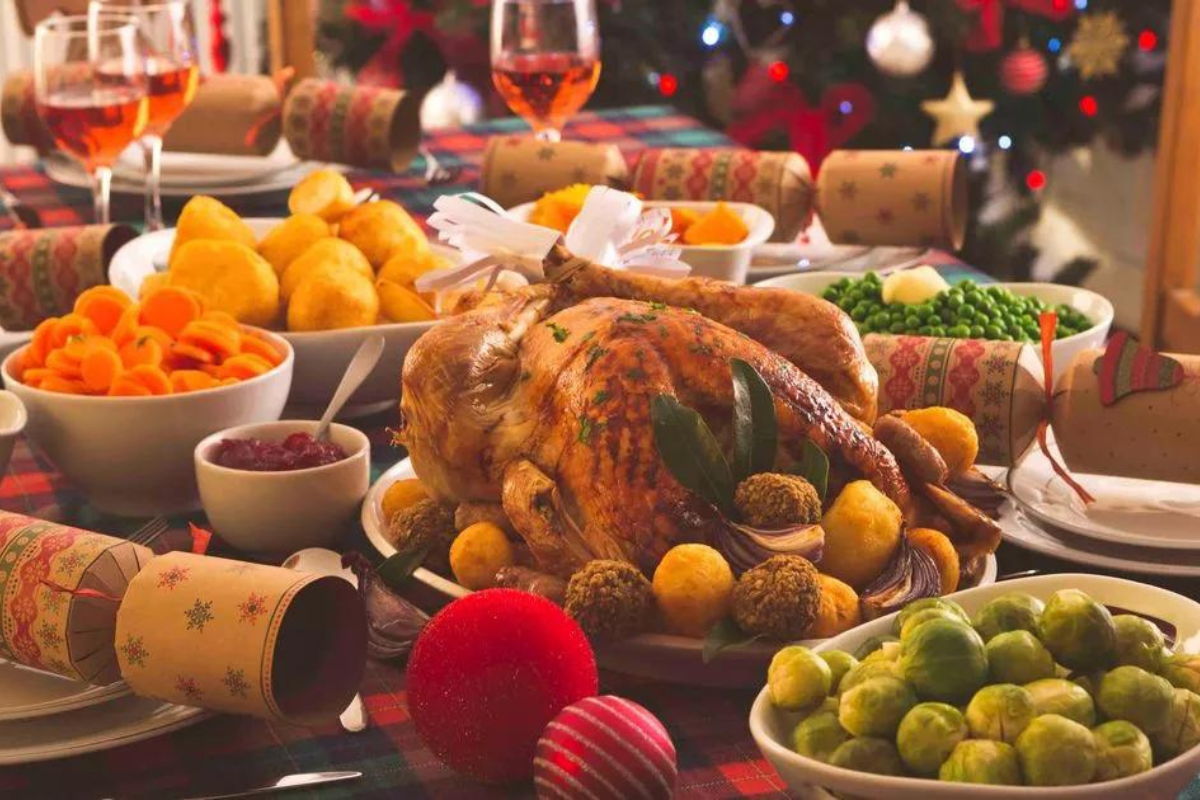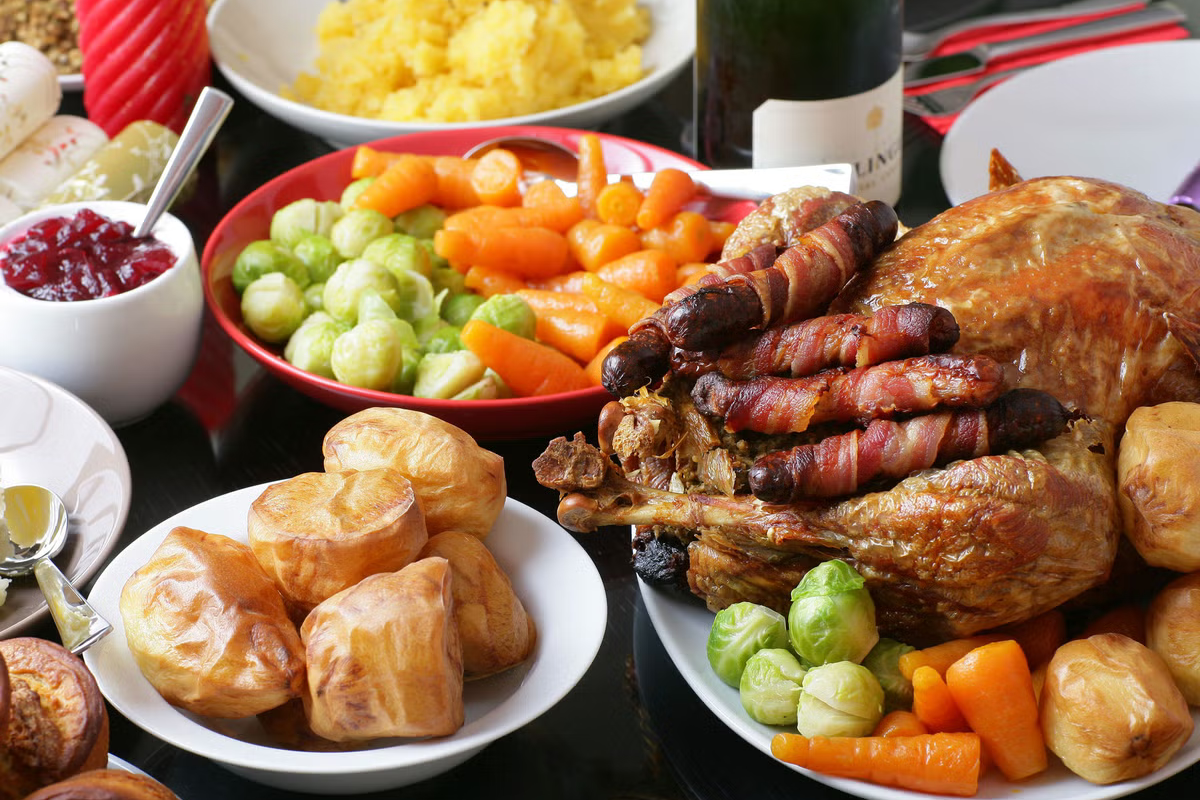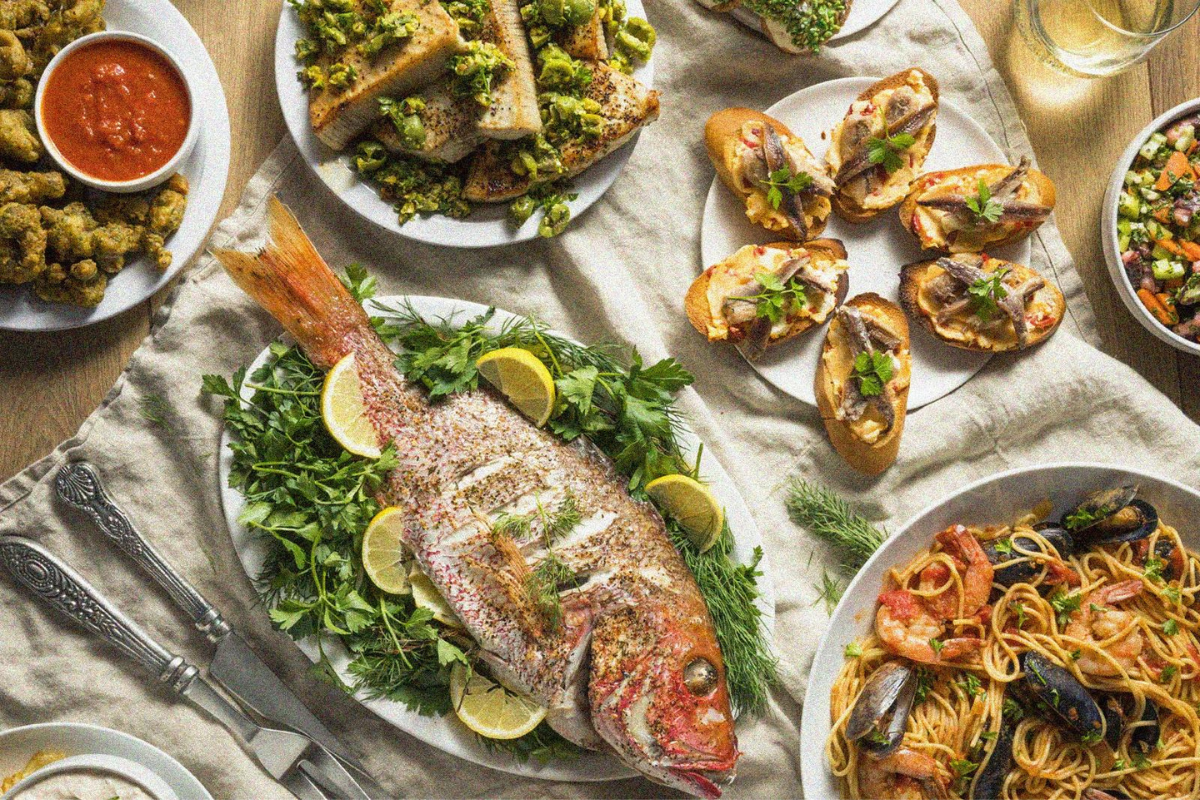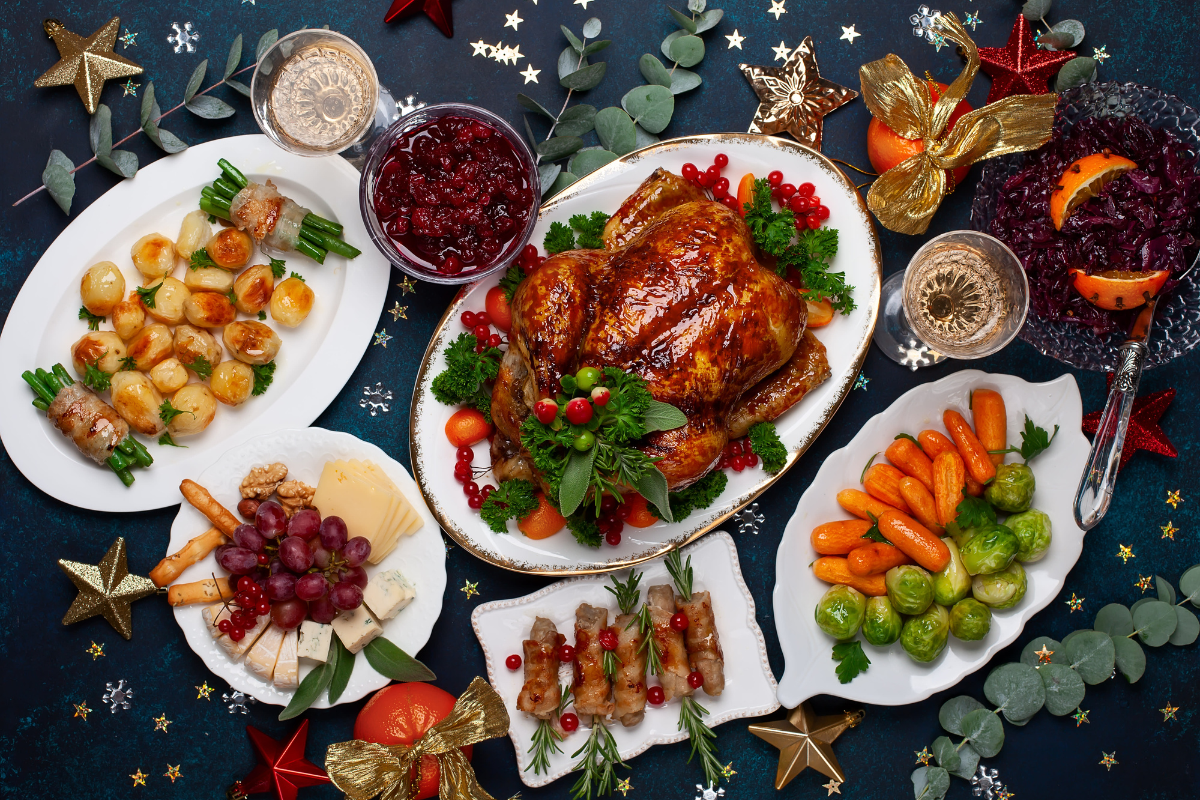As the festive spirit of Christmas fills the air, so does the irresistible aroma of European cuisine, a symphony of flavors that has captivated palates for centuries. From the hearty roasts of England to the delicate pastries of France, each culinary tradition adds its unique touch to the tapestry of Christmas flavors.

Embracing the tradition of English Christmas fare
The English Christmas table is a feast for the senses, a grand celebration of culinary delights. At the heart of this tradition lies the quintessential Christmas roast, a succulent piece of beef, pork, or turkey, often accompanied by a medley of roasted vegetables, such as potatoes, carrots, parsnips, and Brussels sprouts. The rich gravy, infused with the essence of the roasted meat and vegetables, completes the symphony of flavors, transforming the meal into a culinary masterpiece.
Accompanying the roast, a medley of side dishes tantalizes the taste buds. The traditional stuffing, a savory blend of herbs, breadcrumbs, and sometimes sausage, adds a touch of warmth to the meal. Pigs in blankets, and small sausages wrapped in bacon, provide a burst of savory goodness, while cranberry sauce, with its tart and tangy flavor, offers a refreshing contrast to the richness of the roast.

Delving into the delights of French Christmas cuisine
French Christmas cuisine is a delicate dance of flavors, a harmonious blend of tradition and innovation. The centerpiece of the French Christmas table is often a bûche de Noël, a chocolate log cake, adorned with intricate decorations that mimic the bark of a tree. This delightful dessert, with its layers of sponge cake and rich chocolate ganache, is a testament to the artistry of French pastry chefs.
Beyond the bûche de Noël, French Christmas cuisine offers a plethora of savory delights. The escargot, a delicacy of snails cooked in garlic butter, adds a touch of sophistication to the festive menu. Foie gras, a rich and decadent dish of goose liver, is often served as an appetizer, while the coq au vin, a hearty chicken stew in a red wine sauce, provides a comforting warmth on a chilly Christmas evening.
Exploring the culinary gems of German Christmas cuisine
German Christmas cuisine is a celebration of hearty flavors and festive aromas. The Weihnachtsbraten, a roasted goose or duck, often takes center stage, its crispy skin and juicy meat a delight to the palate. The accompanying dumplings, known as Knödel, provide a comforting accompaniment, while red cabbage, stewed in vinegar and spices, offers a tangy counterpoint to the richness of the meat.
For those seeking a lighter option, the Leberkäse, a meatloaf made from liver, pork, and veal, is a popular choice. The Lebkuchen, a gingerbread-like cookie, is a staple of German Christmas cuisine, its warm spices filling the air with festive cheer. And for a truly indulgent treat, the stollen, a rich fruitcake with marzipan and icing, is a must-try.
 Discovering the culinary treasures of Italian Christmas fare
Discovering the culinary treasures of Italian Christmas fare
Italian Christmas cuisine is a symphony of regional specialties, each region showcasing its unique culinary traditions. In the northern regions, the cappelletti, small pasta hats filled with meat or cheese, are a popular Christmas dish. In central Italy, the arrosto misto, a mixed roast of meat and vegetables, is a festive centerpiece. And in the southern regions, the panettone, a sweet bread with candied fruit and raisins, is a beloved Christmas treat.
Beyond these regional specialties, Italian Christmas cuisine offers a wealth of savory delights. The pasta dishes, from the hearty lasagna to the delicate ravioli, are a testament to the Italian love for pasta. The risotto, a creamy rice dish infused with various ingredients, provides a comforting warmth on a chilly Christmas evening. And the salumi, cured meats such as prosciutto and salami, add a touch of sophistication to the festive menu.
From hearty roasts to delicate pastries: A symphony of Christmas flavors
Europe’s Christmas cuisine is a culinary journey that enchants the senses and captivates the heart. From the hearty roasts of England to the delicate pastries of France, each culinary tradition adds its unique touch to the tapestry of Christmas flavors. As we savor the symphony of flavors, we are transported to a world of tradition, artistry, and culinary delight, making the Christmas season a truly magical time of year.
Christmas is a time for celebration and togetherness, and food is a central part of the festivities. Around the world, families gather around tables laden with traditional Christmas dishes, each with its own unique history and flavor. From the hearty roasts of England to the delicate pastries of France, Christmas cuisine is a symphony of flavors that reflects the diversity and richness of human culture.
 In many cultures, Christmas dinner is a grand affair, with a centerpiece that takes pride of place on the table. In England, the centerpiece is often a roast turkey, accompanied by all the trimmings: roast potatoes, carrots, parsnips, peas, stuffing, and gravy. In the United States, a glazed ham or a prime rib roast may take center stage, accompanied by sides like mashed potatoes, green beans, and cranberry sauce.
In many cultures, Christmas dinner is a grand affair, with a centerpiece that takes pride of place on the table. In England, the centerpiece is often a roast turkey, accompanied by all the trimmings: roast potatoes, carrots, parsnips, peas, stuffing, and gravy. In the United States, a glazed ham or a prime rib roast may take center stage, accompanied by sides like mashed potatoes, green beans, and cranberry sauce.
In Italy, the centerpiece of the Christmas meal is often a pasta dish, such as lasagna or ravioli. In Germany, a roast goose or duck may be the star of the show, while in Scandinavia, a variety of fish dishes are often served.
No Christmas dinner would be complete without dessert, and there are countless traditional Christmas sweets from which to choose. In England, a Christmas pudding is a must-have, a rich and fruity cake that is often served with brandy butter. In France, a bûche de Noël, or chocolate log cake, is a popular choice, while in Germany, stollen, a sweet bread with marzipan and icing, is a beloved Christmas treat.
Christmas food is more than just a meal. It is a celebration of tradition, family, and community. It is a time to come together, share stories, and enjoy the company of loved ones. The flavors of Christmas food linger long after the last bite has been taken, reminding us of the joy and warmth of the season.

